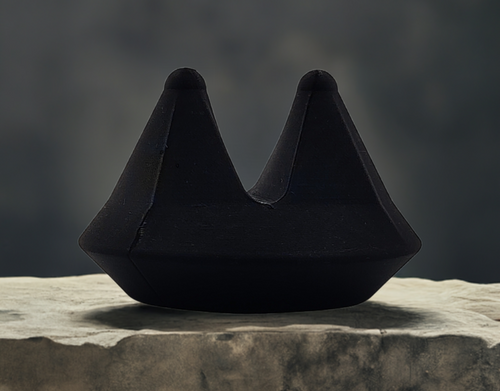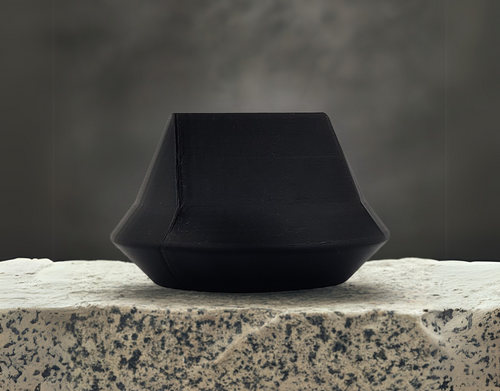Migraine is a complex neurological disorder with symptoms that vary from person to person. One of the symptoms of migraine that may come as a surprise to many is tension headaches. Although tension headaches can also occur on their own, they can also be part of a migraine attack. In this article, we will explore what tension headaches are and how they are related to migraines.
What causes migraines?
The causes of migraines are diverse, and migraine attacks can be caused by a combination of factors. Hereditary predispositions, environmental factors, and biological changes in the brain all play a role in why migraines occur and what triggers attacks.
-
Hereditary factors:
Migraines are often hereditary, and if you have a family history of migraines, your risk of developing migraines increases significantly. An estimated 70-80% of migraine sufferers report a family history of migraines. Certain gene mutations can predispose the nervous system to abnormal functioning, making the brain more sensitive to external and internal stimuli, such as stress or hormonal changes.
-
Environmental factors and lifestyle:
Environment and daily lifestyle play a major role in migraine triggers. The most common triggers are:
- Stressful situations and the subsequent relaxation phase can both trigger migraines.
- Irregular sleep patterns or poor sleep quality can increase the risk of a migraine attack.
- For example, the light from a computer screen or strong perfume can trigger a migraine.
- Certain foods, such as caffeine, alcohol (especially red wine), artificial sweeteners, and highly processed foods, can trigger an attack.
- Especially in women, hormonal fluctuations, such as changes in estrogen levels during the menstrual cycle, are a common migraine trigger.
- Changes in air pressure, humidity, and sudden changes in temperature can trigger migraine attacks.
-
Changes related to brain function:
At the heart of migraine are abnormalities in the functioning of the blood vessels and nervous system in the brain. Migraines are associated with overactivity of nerve cells, which can trigger a series of events in the brain:
- Activation of the trigeminal nerve sends pain signals and is a key factor in a migraine attack.
- Research related to migraine has shown that there may be disturbances in the brainstem region related to pain processing and the nervous system's response to stimuli.
- Abnormalities in serotonin, dopamine, and other neurotransmitters can affect how the brain processes pain and external stimuli.
- Activation of the trigeminal nerve sends pain signals and is a key factor in a migraine attack.
Tension headache as a symptom of migraine
Tension headaches are the most common type of headache, but their occurrence in conjunction with migraine can complicate the situation. Tension headaches associated with migraine differ from independent tension headaches in the following ways:
-
Intensity:
Tension headaches can be more severe than usual when accompanied by migraines, as migraines can increase the discomfort caused by headaches and sensitize the nervous system. This means that even if a tension headache is normally mild to moderate, during a migraine attack it can feel heavier and even like a constant pressure. This is because migraines activate the pain pathways in the brain, which can make any headache feel more intense. Stress and muscle tension can further increase the pain, making it significantly uncomfortable.
-
Location:
Tension headaches associated with migraines usually cause a feeling of pressure in the forehead, temples, on both sides of the head, or in the neck area. The pain is often described as a "bandage-like" tightening sensation that surrounds the head. However, during a migraine attack, this feeling can spread more widely and be combined with the one-sided throbbing pain typical of migraines. Therefore, tension headaches and migraines can overlap, making it difficult to distinguish between the symptoms. If the pain is felt in the neck and shoulders, it may be a headache related to muscle tension in particular.
-
Duration:
Migraine tension headaches can last significantly longer than regular tension headaches, which usually go away within a few hours. In the case of migraines, tension headaches can last for several hours or even the entire migraine attack, which can last for several days. This type of long-lasting pain is especially common in chronic migraine, where there can be more than 15 headache days per month. The long duration of pain can also lead to increased muscle tension, which keeps the pain in a loop and makes it challenging to manage without proper treatment.
Recognizing tension headaches as part of a migraine is important so that treatment can be targeted appropriately. This is especially important because tension headaches and migraines can occur simultaneously or overlap, which can make it difficult to make a correct diagnosis. If tension headaches are ignored in conjunction with migraines, treatment may only target the migraine symptoms, allowing tension headaches to persist and worsen the overall picture.
Types of migraines and their connection to tension headaches
There are several types of migraines, and their occurrence and impact on tension headaches can vary. In some cases, migraines and tension headaches overlap, making it more challenging to identify and treat the symptoms. Here are the most common types of migraines and their relationship to tension headaches:
-
Migraine with aura
Migraine with aura often begins with neurological symptoms called an aura. These symptoms usually occur before the headache begins and may include visual, sensory, or speech disturbances. During an aura, you may experience:
- Flashing lights, zigzag patterns or blurred vision.
- Sensations such as tingling or numbness in the limbs.
- Difficulty speaking or a momentary inability to find words.
Comparison of visual impairments:
The visual symptoms of migraine with aura can feel like looking directly into the sun with your naked eyes for a moment. Bright lights, blurriness, and flashing patterns can be distracting. This can cause discomfort and make it difficult to perform daily activities, such as reading or driving. -
Migraine without aura:
Migraine without aura is the most common type of migraine. It is not associated with the symptoms of aura, but the headache is usually severe and throbbing. Migraines are often accompanied by other symptoms, such as:
- Nausea
- Sensitivity to light and sound
- Fatigue
Connection to tension headaches:
In migraine without aura, a tension headache may be the first sign of an impending migraine attack. Before the actual migraine headache begins, the headache may feel like pressure or a tightening sensation on both sides of the head. This may be because stress or muscle tension in the neck and shoulders acts as a trigger for the migraine attack. -
Chronic migraine:
Chronic migraine is defined as migraine with more than 15 headache days per month, of which at least 8 meet the criteria for a migraine attack. This is a very debilitating condition, both physically and mentally, and requires intensive treatment.Connection to tension headaches:
In chronic migraine, tension-type headache is often a persistent symptom that can occur between migraine attacks. This may be because chronic headaches cause constant muscle tension and exacerbate the sensitization of the nervous system, resulting in overlapping tension-type headaches and migraine headaches. This combination of symptoms can make treatment particularly challenging, as the pain may be present almost daily.
Other migraine symptoms
In addition to tension headaches, migraines are accompanied by many other symptoms that can significantly worsen the condition. These symptoms include:
-
Visual disturbances:
Visual disturbances are a common symptom associated with migraine, especially at the beginning of a migraine attack. In many migraine sufferers, these symptoms are associated with the migraine aura, which can occur before the headache begins. The aura may include flashing lights, zigzag patterns, blurred vision, or even a momentary loss of part of the visual field. These symptoms usually last from a few minutes to an hour and can be bothersome but transient.
-
Nausea and vomiting:
Migraines often affect digestion in many ways, and nausea and vomiting are common symptoms. During a migraine attack, digestion can slow down (gastroparesis), causing a feeling of fullness and nausea. This is due to the neural and chemical changes that occur during a migraine, such as changes in serotonin levels, which also affect the digestive system.
Additionally, medications used to treat migraines, especially strong painkillers or triptans, can cause nausea as a side effect. In some people, the medications can also irritate the stomach, which can worsen the discomfort caused by migraines.
-
Hypersensitivity to light and sound:
Many migraine sufferers experience intense sensory sensitivity during an attack, especially to light (photophobia) and sound (phonophobia). These sensitivities are characterized by the fact that bright lights or loud, even normal, sounds can worsen the symptoms of a migraine attack, such as headache, nausea, or general discomfort.
Migraine vs. Tension Headache: Differences in Symptoms
Migraine can often be identified by symptoms that are "not present" in tension headaches. For example, the diagram shows that light sensitivity occurs in migraines, but is not present in tension headaches. There are several of these distinguishing symptoms that belong to migraines, but not to tension headaches.
Symptom |
Migraine |
Tension headache |
|---|---|---|
| Type of pain | Pulsating, pulsating | A flat, squeezing, "bandage-like" feeling around the head |
| Pain intensity | Moderate or strong | Mild or moderate |
| Location of pain | One-sided; usually forehead, temple, or back of the head | Bilateral, forehead, neck or shoulders |
| Photosensitivity | Common (photophobia); bright lights make symptoms worse | Not usually |
| Sound sensitivity | Common (phonophobia); loud noises worsen symptoms | Not usually |
| Nausea | Often (may also lead to vomiting) | Not usually |
| Aura (e.g. visual disturbances) | Flashing lights, zigzag patterns, or blurring in your vision; may occur before or during the pain | Never |
| The effect of exercise | Physical activity worsens the pain | Usually not affected |
| Duration | 4–72 hours | From 30 minutes to several hours |
| Muscle tension | Not the main reason | Often associated with tightness in the neck and shoulder muscles |
| The effect of sleep | Sleep may be easier after a seizure | No clear connection |
Table 1
Diagnosing migraine and identifying tension headaches
The connection between migraine and tension headaches can be established by visiting your doctor, who will take a medical history and review your symptoms. If necessary, your doctor may also use neurological tests to confirm a more accurate diagnosis. A migraine diary is a useful tool, as it allows you to track the occurrence, duration and possible triggers of your symptoms, which will help your doctor make an assessment.
Migraines are always diagnosed by a doctor. If you suffer from headaches more than three times a month, we recommend that you consult a doctor. Recurrent headaches may require more detailed examinations and the development of a treatment plan.
Well-known Finnish neurologists specializing in headaches and migraines
If you need help with migraine or recurring headaches, you can turn to Finnish neurologists who specialize in headaches and migraines. Here are some well-known experts:
Markku Nissilä, Turku, Health Center
Marja-Liisa Sumelahti, Tampere, Health Center
Ville Artto, Helsinki, Health Center / Medical Center Aava
Filip Scheperjans, Helsinki, Aava Medical Center
They are experienced neurologists with solid expertise in diagnosing and treating migraines. We recommend making an appointment with them if you need expert evaluations or treatment advice. This is not a paid advertisement or partnership. We list well-known experts to help our customers find competent treatment if needed.
Frequently Asked Questions (FAQ)
1. How do you tell the difference between a tension headache and a migraine?
Tension headaches are usually steady and pressing, while migraine headaches are often throbbing and more intense. Migraines also have other symptoms, such as nausea, sensitivity to light, and sensitivity to sound, that tension headaches usually don't have. A neurologist can help confirm the diagnosis.
2. Can tension headaches be part of a migraine?
Yes, tension headaches can occur as part of a migraine attack. This makes migraines more complicated to treat, as both types of headaches can make each other worse. In the case of migraines, tension headaches can be felt especially in the neck, forehead, or on both sides of the head.
3. How can migraine triggers be identified?
A migraine diary is the best way to identify your triggers. Write down:
- Time of the scene
- Food and drink
- Stress level
- Sleep quantity and quality
- Possible external factors, such as weather changes or bright lights
4. What treatments are available for tension headaches associated with migraine?
Treatment may include:
- Medications, such as migraine prevention drugs or painkillers
- Stress management techniques, such as meditation, deep breathing, or massage
- Good work ergonomics that reduce strain on the neck and shoulders
5. How can I get relief from chronic migraines?
Treatment for chronic migraine may include:
- Medication, such as botulinum injection treatments or preventative medications
- Lifestyle changes, such as regular sleep and stress management
- Expert-guided treatment, which may include physiotherapy or diet optimization
6. When should you see a doctor?
If you suffer from headaches more than three times a month or if they significantly interfere with your daily life, you should see a doctor. Recurrent headaches may be caused by migraines, which require a diagnosis and treatment plan.
Summary
Tension headaches are one of the symptoms of migraines, which can make attacks worse and make them more difficult to control. However, they can be identified and treated with the right tools, such as lifestyle changes and medication. If you suffer from recurring headaches or suspect you have migraines, make an appointment with a specialist. Early diagnosis can improve treatment outcomes and quality of life.




